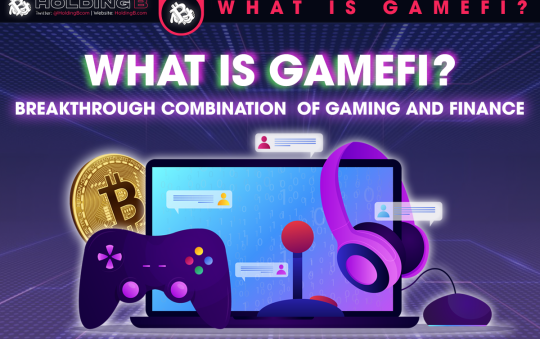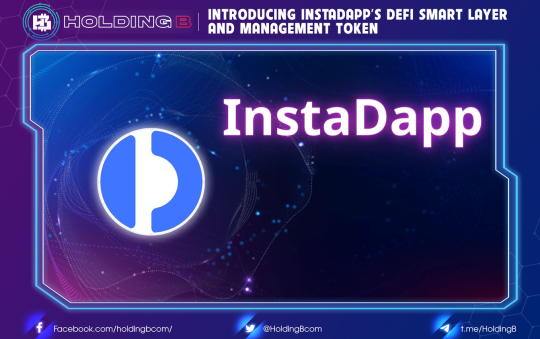The NEAR protocol is a smart contracting platform with user- and developer-friendly characteristics. NEAR provides a blockchain platform with good scalability that makes it easy to deploy decentralized applications. NEAR was developed in the summer of 2018 by Alex Skidanov and Illia Polosukhin. In this article, we’ll learn about deFi apps on NEAR.
The development of DeFi
DeFi or Decentralized Finance are financial instruments developed based on blockchain technology. While centralized financial instruments are experiencing problems such as user engagement or bureaucracy, DeFi’s apps are like Lego pieces where users can put them together to create entirely new financial instruments. The total capitalization of the DeFi ecosystem has skyrocketed from $7.40 billion on June 22, 2020 to $97.7 billion on September 7, 2021. That means DeFi’s market capitalization has increased by nearly 1220% in just one year!
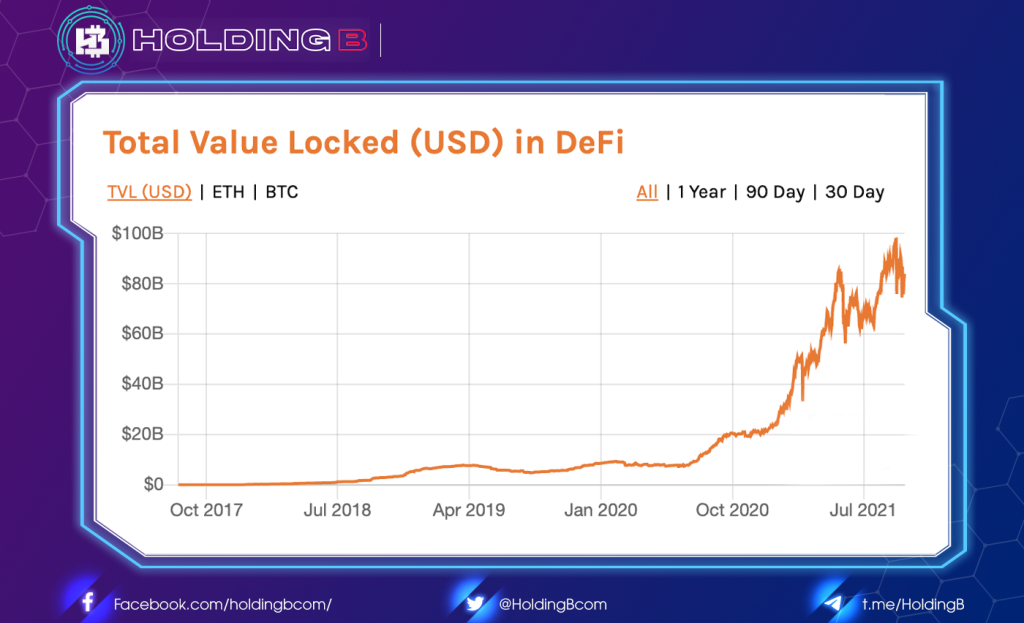
As of now, the total value locked (TVL) in the DeFi sector is about $83.86 billion.
The true importance of DeFi
Just considering the total value locked in DeFi, we will not see its full value and true meaning. DeFi is an important piece of the puzzle in building the Open Web and it was DeFi that brought many talents to ethereum’s ecosystem in the last two years. Actions that take weeks to complete in the traditional world of finance take only a few seconds with DeFi.
However, DeFi’s great attention to the Ethereum ecosystem has also created a drawback for this ecosystem. Due to the sudden increase in demand, DeFi is the cause of network congestion and increased transaction fees on Ethereum. It also adds to the barriers for developers or creators when they want to participate in Ethereum’s ecosystem.
The NEAR protocol provides a viable solution that is both faster and cheaper than Ethereum.
DeFi On NEAR Protocol
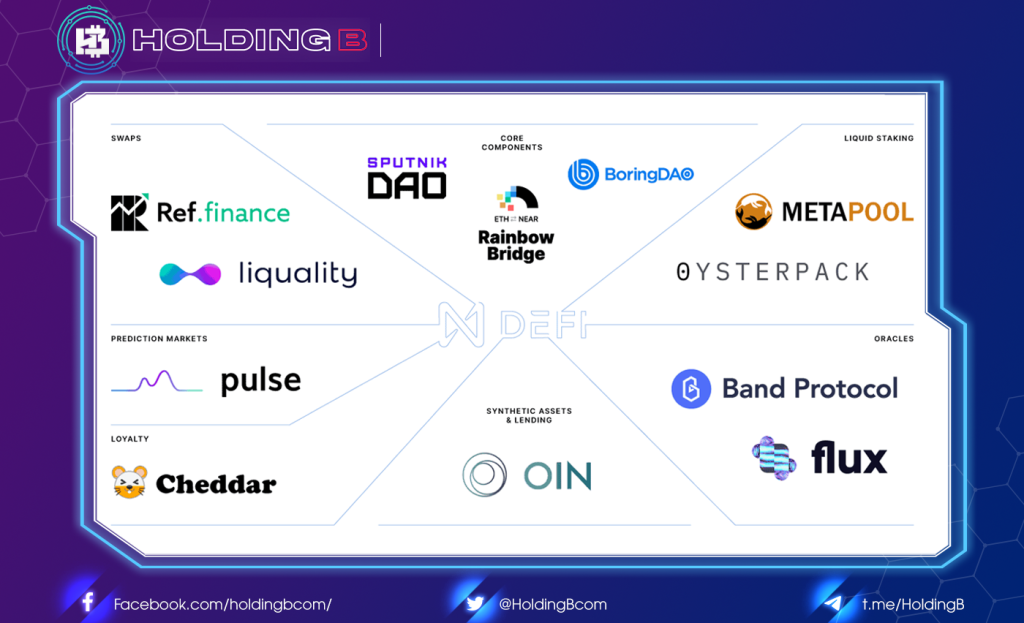
Now, let’s take a look at some of the potential DeFi projects on the NEAR ecosystem.
Rainbow Bridge
Rainbow Bridge is the bridge between NEAR and Ethereum. Thanks to rainbow bridge, almost all assets derived from Ethereum are now usable on NEAR. Since its launch, the project has been used to convert more than $1 million worth of ETH, DAI and other tokens. Rainbow Bridge’s infrastructure can be easily replaced and ensure connectivity between NEAR and all EVM-compatible blockchains such as Polygon, BSC, Avalanche, Optimism, Arbitrum, etc. Rainbow Bridge’s development team is working to expand this infrastructure to support interaction with EVM-incompatible blockchains such as Bitcoin, Cosmos, etc.
Some interesting facts about Rainbow Bridge:
- Users can use Rainbow Bridge directly through Metamask.
- Transactions on NEAR are confirmed in less than 2 seconds with gas fees cheaper than 1 cent.
The way a transaction is made on the bridge between NEAR<>Ethereum is as follows:
- Assets from Ethereum moving to NEAR take about 6 minutes (about 20 blocks)
- ERC20 transaction fees average about $10
- Sending assets from NEAR back to Ethereum takes up to 16 hours (depending on the time it takes to confirm transactions on Ethereum). The process costs about $60 and depends on gas charges on Ethereum.
The Rainbow Bridge project is an important step forward in increasing NEAR’s interoperability with other blockchains. Moreover, since transactions on NEAR are faster and fees are also cheaper, users of other blockchains will likely be more favorable to interact with Ethereum assets than to use a direct bridge from that blockchain to Ethereum.
Ref Finance
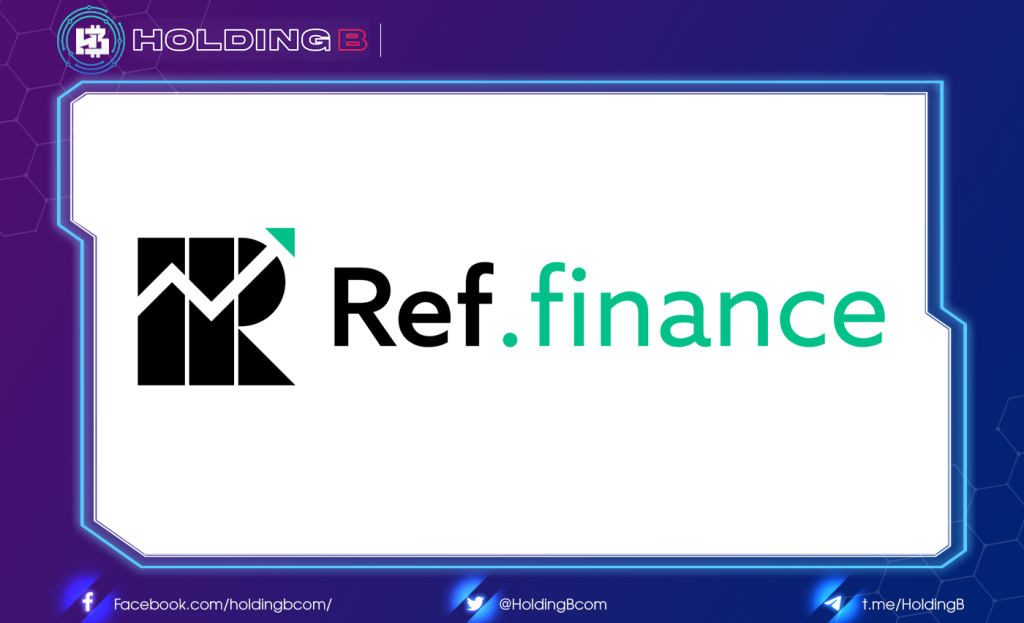
Ref Finance is the first DeFi platform on NEAR. The first version of Ref has some similarities to uniswap V2, along with supporting more pools, pool owners can customize the transaction fee for the pool themselves and this project is completely owned by the community. The main purpose of Ref Finance is to bring together deFi’s core components such as decentralized exchanges (DEX), lending protocols, derivatives issuance, etc.
Ref Finance has a budget of 35 million REF tokens, of which 10% is allocated to the fund for the development of upcoming projects and 25% to future community-related activities, events and partnerships.
The features of Ref Finance:
- Decentralized exchanges along with automated market creation protocols (AMM) allow automatic or swap trading between NEAR ecosystem tokens and tokens transferred from other blockchains.
- Liquidity providers can receive ref tokens or a NEP-141 token by stakeing liquidity tokens.
- Users can also stake REF tokens to receive additional REF if they intend to keep the REF long-term.
Ref is a community project and behind this project is a DAO (decentralized autonomous organization). In Ref DAO there are two roles: council and community department:
- Council: create proposals and vote on these proposals. The proposal will only pass if a majority of the council agrees. The council will be changed after the DAO is fully operational.
- Community Boards: Community boards also vote in favor of or reject a proposal. In most cases, the council will abide by the decision of the community board.
OIN Finance
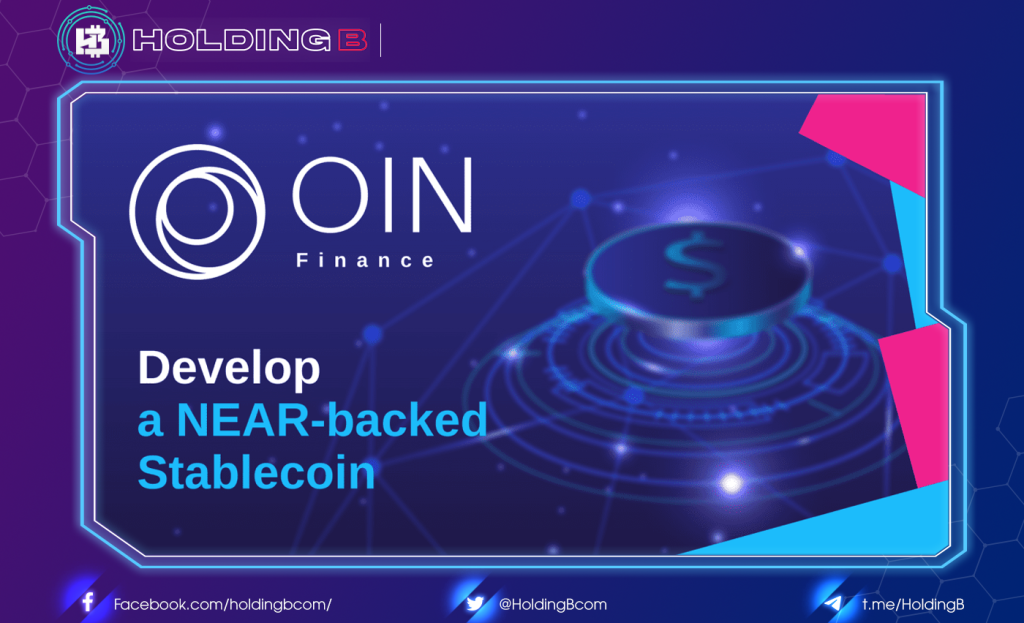
OIN is a decentralized stablecoin issuance platform that allows projects to issue stablecoins bearing their own brand. Instead of having to put on the whitelist their collateral on other platforms, OIN will create a stablecoin that is collateralized on NEAR to unlock liquidity without selling their NEAR tokens. The use cases of OIN are: swapping for other mainstream stablecoins, adding leverage, hedging, lending and a lot of ecosystem-specific utilities.
Currently, the main product line on OIN is OINDAO. It allows participating projects to create their own collateral pool to mint their own branded stablecoins. OIN establishes a quick authentication process for each transaction initiated on the blockchain through the Merkle proof system. They do so by putting a portion of the information that leads to the “original transaction” on the ledger and using it to authenticate a larger database of information.
Some of OIN’s highlights:
- As long as the listing project decides the parameters, the minting of stablecoins is easy and fast.
- All of OIN’s smart contracts have been thoroughly evaluated.
- Be technologically supported when setting parameters related to the risks of smart contracts
- You will also be technologically supported to swap your own branded stablecoins with the main stablecoins on Curve and Balancer to unlock liquidity for your assets.
Skyward Finance
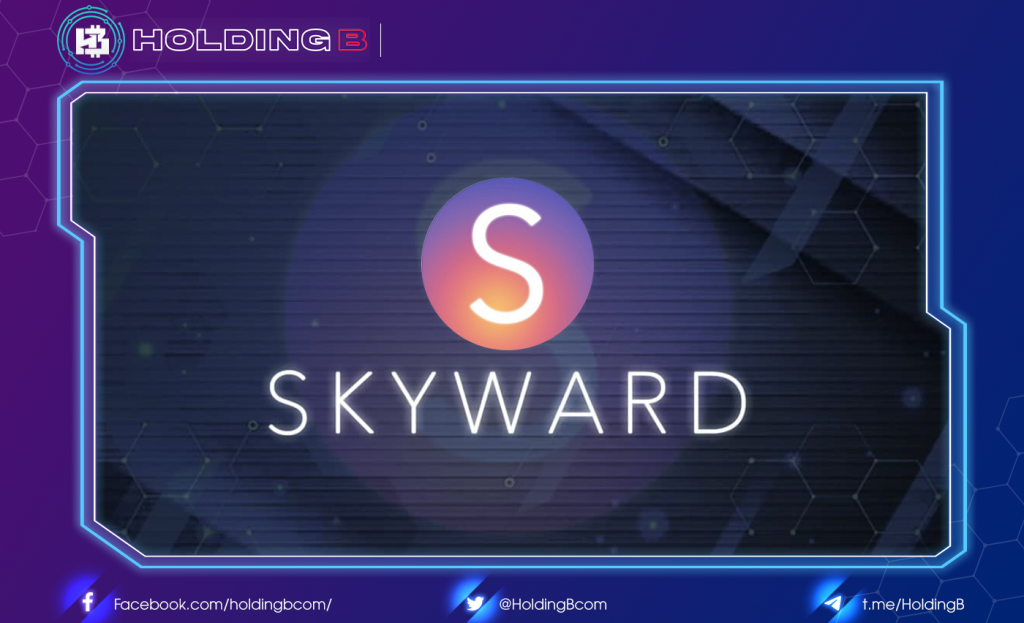
Skyward Finance is an open source launchpad project that projects can use to market their tokens when the token is not yet liquid. Skyward has one of the best pricing mechanisms, which helps to combat sybil attacks and attacks by bots. The platform enables automatic pricing and token distribution for projects built on the NEAR Protocol. It does this using a decentralized auction method that anyone can participate in or withdraw at any time of the auction. This method of auction also helps combat price manipulation, front-run phenomena and sybil attacks. Skyward Finance will issue tokens to the community, allowing the holders of this token to become part of the platform and make a profit.
Some advantages of Skyward Finance
Skyward Finance has some of the following advantages:
- Projects can launch tokens without liquidity.
- Skyward Finance’s pricing mechanism is resistant to bot attacks and sybil attacks. It also helps prevent price manipulation.
- Projects can raise funds with any token and can also launch multiple token sales including different tokens.
- Since Skyward Finance’s auction mechanism is not affected by any form of price manipulation, projects and their founders can maximize capital based on market value.
- Projects do not necessarily have to own tokens $SKYWARD to participate in or create auctions.
- Skyward Finance is an open source and permissionless project, which means that smart contracts on the platform are completely independent.
- Since Skyward Finance runs on NEAR, it can take advantage of NEAR’s scalability, and transaction fees are also cheaper than running on other blockchain platforms.
Meta Pool
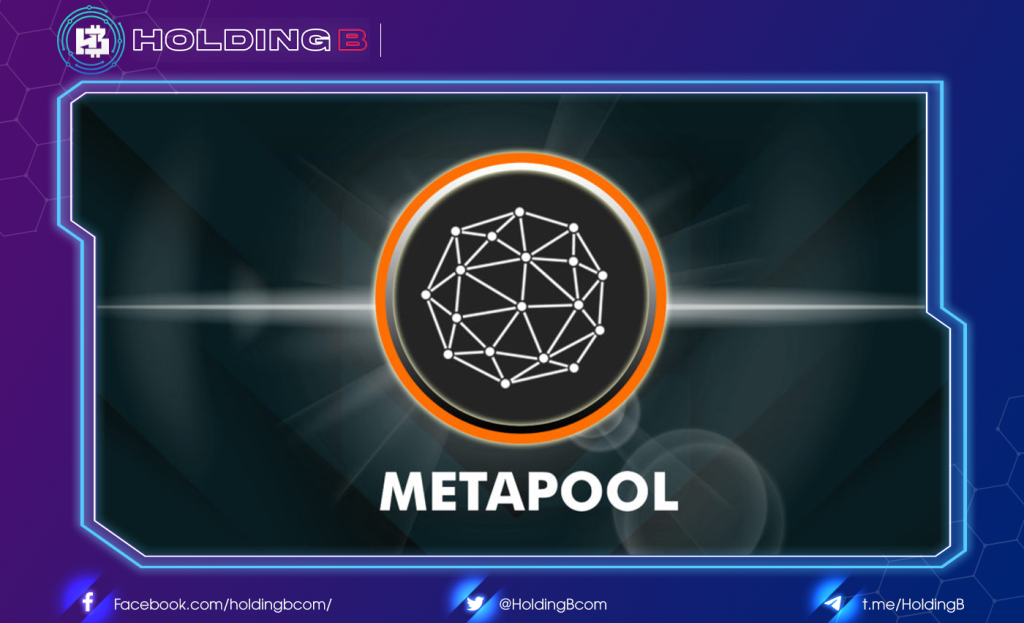
Meta Pool is a liquidity staking protocol built on the NEAR Protocol. Individuals can easily stake their NEAR tokens using Meta Pool with automated stake strategies. In return, they will receive a “Staked NEAR” token that they can use in the DeFi NEARverse. These stNEAR tokens can also be swapped back to the original NEAR token at any time.
Meta Pool became an essential part of NEAR’s DeFi ecosystem when it introduced NEAR’s first liquid staking token, stNEAR. The stNEAR token can accumulate stake rewards and also represents stake positions on NEAR. Meta Pool provides NEAR token holders with an easy-to-use and profitable platform while creating a decentralized network. The Meta Pool will run on a DAO on Sputnik V2 – a platform built on NEAR to manage decentralized autonomous organizations.
When token holders stake NEAR enter meta pool, they will also receive some tokens $META after each epoch. Each epoch is 12 hours. The number of $META tokens that users receive is based on apy staking on NEAR (specifically about 10.2% a year).
Cheddar
Cheddar is a project that helps create a loyal customer network for NEAR and its ecosystem of decentralized applications. Cheddar establishes strategic partnerships that actively promote the use of the NEAR Protocol when rewarding users. A network of loyal customers has been shown to motivate users to take actions that benefit the business. Through Cheddar, community tokens can be launched, which in turn allows apps to increase user loyalty and add new revenue streams using the farming mechanism.
Cheddar differs from other yield farming platforms because it provides long-term benefits to HODL-ers through powerUP. It also promotes the use of cross-application throughout the NEAR ecosystem, allowing users to farm out Cheddar through yield farming, providing liquidity or using dApps.
What benefits does Cheddar bring to the NEAR ecosystem?
- Connecting dApps – Cheddar creates a common link between applications in addition to individual tokens, thereby creating an ecosystem of loyalty to dApps on NEAR.
- User Engagement – Cheddar creates long-term user interaction through various incentives and builds loyalty through strategic partnerships.
Cross-chain jump – Cheddar creates alignment between chains and keeps NEAR users active and actively engaged, ensuring that TVL on NEAR stays the same.
Berry Club

Berry Club allows users to create shared pixel-style artwork while still being able to do farming to retrieve reward tokens. Berry Club was originally a PoC -Proof of Concept product about DeFi but since its implementation it has evolved into a well-known community project on NEAR. Berry Club excellently applies the features of the NEAR Protocol, such as automatic payments to the creator of smart contracts – something that is not yet available on any other blockchain.
Thanks to NEAR’s unique design, Berry Club and Berry Farm can benefit both users and smart contract creators, paid for as smart contract rewards for both token holders and creators. These benefits arise from increased app use (Berry Club). This way of distributing rewards is not possible on platforms like Ethereum, at least this is not applicable in ethereum’s current implementation. This is another reason why users and developers should experiment with NEAR.
See ya in the next article !
Don’t forget to follow useful articles about Crypto Market from team Holding B !!!
- Telegram Channel: https://t.me/HoldingBcom
- Telegram Group: https://t.me/HoldingB
- Website: https://holdingb.com/
- Twitter: https://twitter.com/HoldingBcom
- Facebook: https://www.facebook.com/holdingbcom


